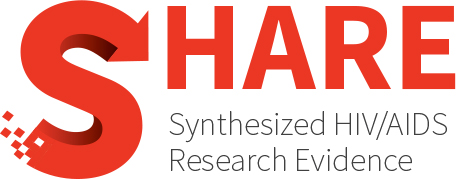Category Archives: Other
human immunodeficiency virus (HIV) and outcomes from coronavirus disease 2019 (COVID-19) pneumonia: A meta-analysis and meta-regression
BACKGROUND: The number of positive and death cases from coronavirus disease 2019 (COVID-19) is still increasing until now. One of the most prone individuals, even in normal situations is patients...
Risk factors and predictors associated with the severity of COVID-19 in China: A systematic review, meta-analysis, and meta-regression
Since December 2019, the pneumonia cases infected with 2019 novel coronavirus have appeared, posing a critical threat to global health. In this study, we performed a meta-analysis to discover the...
Residual or recurrent precancerous lesions after treatment of cervical lesions in human immunodeficiency virus-infected women: A systematic review and meta-analysis of treatment failure
BACKGROUND: Screening and treating premalignant cervical lesions (cervical intraepithelial neoplasia 2+ [CIN2+]) is an effective way to prevent cervical cancer, and recommendations exist for the monitoring of treatment success. Yet,...
Measles seroprevalence and vaccine responses in human immunodeficiency virus-infected adolescents and adults: A systematic review
BACKGROUND: The World Health Organization (WHO) recommends an additional dose of measles-containing vaccine (MCV) for human immunodeficiency virus (HIV)-infected children receiving highly active antiretroviral therapy following immune reconstitution. We conducted...
Are sexually transmitted infection/HIV behavioral interventions for women of color culturally grounded? A review of the literature
Although behavioral interventions for women of color have been shown to be effective in reducing sexually transmitted infections (STIs), STI/HIV rates continue to increase. To alleviate sexual health disparities, it...
Human Toxoplasma gondii infection in Nigeria: A systematic review and meta-analysis of data published between 1960 and 2019
BACKGROUND: Over 70% of the worlds’ population is infected by Toxoplasma gondii; a pathogen capable of causing cerebral toxoplasmosis in HIV patients and neonatal complications like miscarriage, chorioretinitis, hydrocephalus, cerebral...
Plantar verrucae in human immunodeficiency virus infection: 25 years of research of a viral coinfection
A higher incidence of plantar verrucae, commonly known as plantar warts, has been shown in patients infected with the human immunodeficiency virus. Several strains of human papillomavirus are associated with...
Cryptococcus and cryptococcosis in Iran during 1969–2019: A systematic review and meta-analysis
OBJECTIVE: Limited data are available on the epidemiology and etiology of cryptococcal infections in the Middle East. We aimed to conduct the systematic review and meta-analysis to summarize the epidemiological...
Association of cardiovascular disease and 10 other pre-existing comorbidities with COVID-19 mortality: A systematic review and meta-analysis
BACKGROUND: Estimating the risk of pre-existing comorbidities on coronavirus disease 2019 (COVID-19) mortality may promote the importance of targeting populations at risk to improve survival. This systematic review and meta-analysis...
Cryptococcal antigen in serum and cerebrospinal fluid for detecting cryptococcal meningitis in adults living with HIV: Systematic review and meta-analysis of diagnostic test accuracy studies
Cryptococcal antigen (CrAg) detection could direct timely initiation of antifungal therapy. We searched MEDLINE and EMBASE for studies where CrAg detection in serum/cerebrospinal fluid (CSF) and CSF fungal culture were...
Intestinal parasites and HIV in Ethiopian tuberclosis patients: A systematic review and meta-analysis
BACKGROUND: The distribution of intestinal parasites among patients with tuberculosis in Ethiopia is not well understood. OBJECTIVE: This systematic review and meta-analysis was designed to determine the pooled national prevalence...
Oral mycobiome identification in atopic dermatitis, leukemia, and HIV patients — A systematic review
INTRODUCTION: Oral mycobiome profiling is important to understand host-pathogen interactions that occur in various diseases. Invasive fungal infections are particularly relevant for patients who have received chemotherapy and for those...
